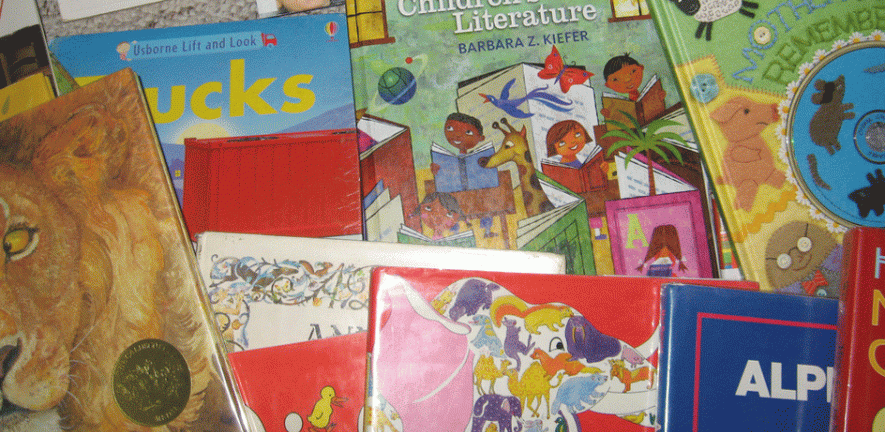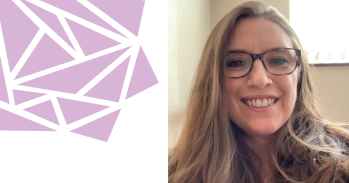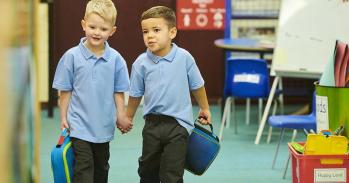
A new Centre for Children’s Literature is providing a focus for research on how children are shaped by early encounters with books and film.
A new Centre for Children’s Literature is providing a focus for research on how children are shaped by early encounters with books and film.
Books, films and other cultural media are produced by one social group, the adults, for another social group, the children, and often have educational and instructive purposes.
Professor Maria Nikolajeva
Understanding the messages and ideas that children pick up from books is an important part of understanding children’s education, as Professor Maria Nikolajeva, Director of Cambridge’s new Centre for Children’s Literature, explained: ‘Children can struggle with fundamental questions of life and death, good and evil, what it means to be a human being, and many will carry ideologies they pick up from picturebooks, fairytales, novels, animation and poetry through to adulthood. Any starting point that has the capacity to shape young people’s development deserves serious consideration.’
‘Children frequently perceive literature and art differently from their parents and teachers, who may have lost the open, immediate and joyful experience of the world that children have,’ added Professor Nikolajeva. ‘A better understanding of the significance of children’s literature and other cultural sources in broad terms can be used to improve children’s education and development.’
The Cambridge/Homerton Research and Teaching Centre for Children’s Literature has been launched to consolidate and focus the research on children’s books and other cultural sources that has been ongoing for more than 30 years at Homerton College and later at the Faculty of Education. This long tradition has earned both institutions a strong national and international profile as a children’s literature research community of excellence.
Rich seams of investigation
The goal of research at the Centre is to understand the ideas that children garner through books and other media in these early years, and to use this understanding to help educators make the best use of their materials. This can only be achieved through serious and thorough studies of the texts themselves, their history, themes, structures and social context.
Children’s literature is investigated with the same approaches used by academics studying any other type of literature or art. Indeed, research at the Centre draws on ideas from many areas, including literary criticism, art criticism, childhood studies, cultural studies, psychology, sociology and pedagogy.
This richness of approaches and materials makes children’s literature a particularly exciting area of study. ‘Yet the specific characteristics of children’s literature compared with other literature cannot be ignored,’ said Professor Nikolajeva. ‘Books, films and other cultural media are produced by one social group, the adults, for another social group, the children, and often have educational and instructive purposes. It thus becomes a vehicle of power, a socialisation device that has been employed by adults for centuries. Understanding these mechanisms is a cornerstone of any inquiry into children’s literature.’
Children’s literature is also an important part of our cultural heritage, something that is shared not only between children and adults, but also with people all over the world, as the best children’s books are translated and cross national borders. In recent years, the rising number of books that appeal both to children and adults, such as Philip Pullman’sHis Dark Materialstrilogy, is offering a new dimension for analysing the characteristics of books that are able to bridge this divide, a phenomenon that was last prominent in the 16th and 17th centuries.
Fresh approaches
The Centre comprises about a dozen academics whose collective research covers texts that represent the widest possible span of reading ages and genres, from picturebooks through to teenage fiction, from fairy tales and fantasy to school stories and adventure, as well as film, comics, graphic novels and video games. In addition to this unique portfolio, the Centre combines theoretical expertise with empirical research in the field, mostly in schools.
Current research topics range from Victorian poetry to the role of nature in Walt Disney’s animation; from what girls read in the 19th century to young children’s understanding of visual texts; from early science books for children to adaptations of Shakespeare; and from young readers’ literature preferences in Lebanon to the image of adolescence in contemporary film. Graduate students also bring their own insights and innovative approaches to the field, as do visiting scholars from all over the world.
The aim is for the Centre’s research to underpin educational thinking, policy and practice in relation to the importance of children’s literature. The scholars are confident that their endeavours can make a difference. ‘At the heart of what we do,’ said Professor Nikolajeva, ‘is a desire to understand how we can best help future generations of children to learn.’
For more information about research at the Faculty of Education, please visit www.educ.cam.ac.uk/centres/childrensliterature/
PLACE in the wider Faculty
The Faculty of Education is one of the leading departments of education internationally, and has been repeatedly evaluated as the best nationally, for its commitment to teacher education, development of research-based policy and practice, and educational research of the highest quality.
Its academic staff, numbering more than 80, work within five academic groups that focus on many aspects of understanding and improving education, whether it’s redesigning school science and mathematics teaching, conducting the Cambridge Review of Primary Education, understanding the neuroscience of learning difficulties, evaluating the contribution made to learning by different types of leaders, or investigating how education affects the lives of people living in poorer communities around the world.
The recently launched Centre for Children’s Literature is hosted by the Pedagogy, Language, Arts and Culture in Education (PLACE) academic group. This multidisciplinary group brings together specialists in arts and creativity, drama and media, modern and second language learning, history, English, geography, philosophy and religious studies. As Professor Maria Nikolajeva, Chair of PLACE, explained, this breadth is significantly benefitting collaborations. ‘In finding synergy between interests and expertise, we are discovering a new research space that can answer questions in different ways.’
An example of this activity is an interdisciplinary research project involving specialists in children’s literature, English, the curriculum and geography, which is investigating how children perceive their identities through the place they live in, using a variety of activities such as reading, creative writing, studying local history and map drawing.
Two schools in East Anglia are taking part in the study. ‘Although only 10 miles from each other, they are worlds apart,’ said Professor Nikolajeva. ‘The urban school has a 95% Pakistani intake and the rural school has many pupils from families that have gone to the same school for generations. This research should raise fascinating differences and similarities in how children understand and learn about their own sense of belonging.’ The project builds on recent moves in the statutory curriculum to re-emphasise a cross-curricular approach to classroom teaching; research results will feed back into teaching practice.
For more information about the Centre, please visit www.educ.cam.ac.uk/centres/childrensliterature/ or contact Professor Maria Nikolajeva (mn351 AT cam DOT ac DOT uk) at the Faculty of Education. The Centre for Children’s Literature is seeking additional funding for research
This work is licensed under a Creative Commons Licence. If you use this content on your site please link back to this page.





